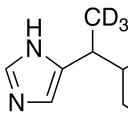Functional and evolutionary analysis of the AP1/SEP/AGL6 superclade of MADS-box genes in the basal eudicot Epimedium sagittatum.
Nyckelord
Abstrakt
OBJECTIVE
MADS-box transcriptional regulators play important roles during plant development. Based on phylogenetic reconstruction, the AP1/SEP/AGL6 superclade of floral MADS-box genes underwent one or two duplication events in the common ancestor of the core eudicots. However, the functional evolution of the AP1/SEP/AGL6 superclade in basal eudicots remains uncharacterized. Epimedium sagittatum is a basal eudicot species valued for its medicinal properties and showing unique floral morphology. In this study, structural and functional variation of FUL-like (AP1 subfamily), SEP-like and AGL6-like genes in this species was investigated to further our understanding of flower evolution in angiosperms. Detailed investigations into the microsynteny and evolutionary history of the floral A and E class MADS-box genes in eudicots were undertaken and used to trace their genomic rearrangements.
METHODS
One AP1-like gene, two SEP-like genes and one AGL6-like gene were cloned from E. sagittatum. Their expression patterns were examined using quantitative RT-PCR in different vegetative and reproductive organs at two developmental stages. Yeast two-hybrid assays were carried out among AP1/SEP/AGL6 superclade, AP3/PI and AGAMOUS subfamily members for elucidation of dimerization patterns. In addition, possible formation of a ternary complex involving B class proteins with the A class protein EsFUL-like, the E class SEP-like protein EsAGL2-1 or the AGL6-class protein EsAGL6 were detected using yeast three-hybrid assays. Transgenic Arabidopsis or tobacco plants expressing EsFUL-like, EsAGL2-1 and EsAGL6-like under the cauliflower mosaic virus (CaMV) 35S promoter were generated and analysed. Genomic studies of AP1 syntenic regions in arabidopsis, columbine, strawberry, papaya, peach, grapevine and tomato were conducted for microsyntenic analyses.
RESULTS
Sequence and phylogenetic analyses showed that EsFUL-like is a member of the AP1 (A class) subfamily, EsAGL2-1 and EsAGL2-2 belong to the SEP-like (E class) subfamily, and EsAGL6-like belongs to the AGL6 (AGL6 class) subfamily. Quantitative RT-PCR analyses revealed that the transcripts of the four genes are absent, or minimal, in vegetative tissues and are most highly expressed in floral organs. Yeast two-hybrid results revealed that of the eight MADS-box proteins tested, only EsAGL6-like, EsAGL2-1 and EsAGL2 were able to form strong homo- and heterodimers, with EsAGL6-like and EsAGL2-1 showing similar interaction patterns. Yeast three-hybrid analysis revealed that EsFUL1-like, EsAGL6-like and EsAGL2-1 (representing the three major lineages of the Epimedium AGL/SEP/ALG6 superclade) could act as bridging proteins in ternary complexes with both EsAP3-2 (B class) and EsPI (B class), which do not heterodimerize themselves. Syntenic analyses of sequenced basal eudicots, rosids and asterids showed that most AP1-like and SEP-like genes have been tightly associated as neighbours since the origin of basal eudicots. Ectopic expression of EsFUL-like in arabidopsis caused early flowering through endogenous high-level expression of AP1 and formation of secondary flowers between the first and second whorls. Tobacco plants with ectopic expression of EsAGL2-1 showed shortened pistils and styles, as well as axillary and extra petals in the initial flower.
CONCLUSIONS
This study provides a description of EsFUL-like, EsAGL2-1, EsAGL2-2 and EsAGL6-like function divergence and conservation in comparison with a selection of model core eudicots. The study also highlights how organization in genomic segments containing A and E class genes in sequenced model species has resulted in similar topologies of AP1 and SEP-like gene trees.



